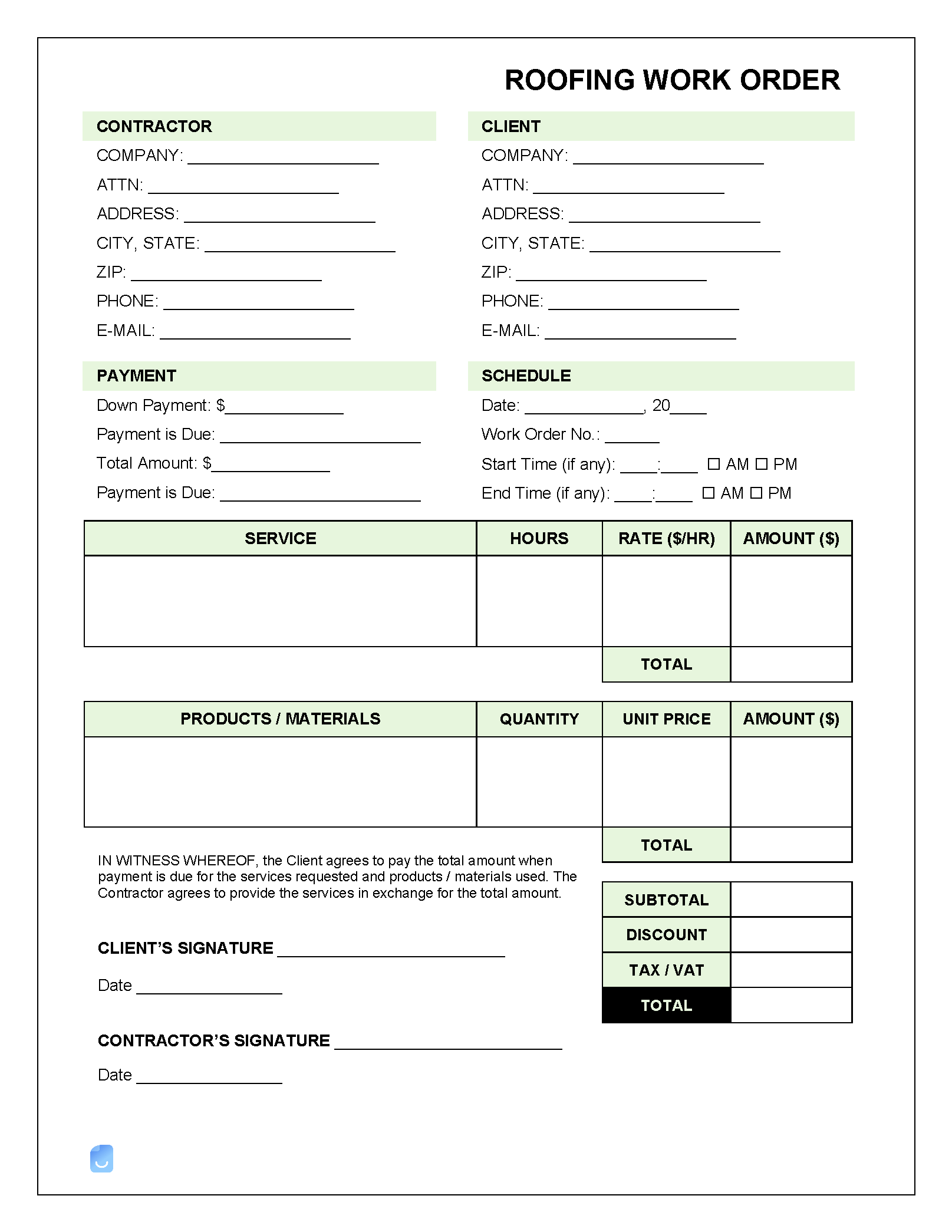Roofing Work Order Template
A roofing work order is a form used for outlining a job in which a roofing company will be constructing, replacing, repairing, or patching a roof. Work orders are used in both commercial and residential roofing applications and allow for companies to efficiently organize job requests and the order employees will be completing them.
Why Use a Work Order for Roofing?
It’s a common assumption that smaller roofing companies don’t need to complete work orders, whether it’s because their workload is light or they only take on a single project at a time. This couldn’t be farther from the truth. Smaller companies, especially recently opened companies, need to demonstrate their reliability and efficiency early-on. A large portion of businesses in the profession of roofing is based on word-of-mouth, and news of a poorly-performing company can spread like wildfire; especially so among commercial customers. In brief, work orders have a place in every roofing company both large and small, and by not taking advantage of their potential for increased organization, contractors are only cutting themselves short.
Roof Replacement Factors
The time it takes for a company to replace a roof relies on many factors, of which includes:
- The size of the roof
- Roofing material used (slate, tile, asphalt shingles, etc.)
- Quality of roof decking
- Replacement method
- Number of roofers
- Climate (extremely hot and cold climates typically slow a worker’s pace)
Information to Include in a Work Order
Work orders are completed by the lead roofing contractor after receiving a request from a customer. The contractor then drafts the work order (with cost estimates included) and sends it to the property owner for approval. Upon receiving approval, the contractor will send the work order to the necessary employee(s) so they can begin to prepare for the job. The contractor will also create a work schedule to ensure the project meets the time constraints stated in the order. A work order needs to contain enough information so that the roofers know the size of the job, the type of work they’ll be performing, where the property is located, the kind of supplies they’ll need to bring along (or purchase), and the contact information of the client and/or the general contractor overseeing the job.
